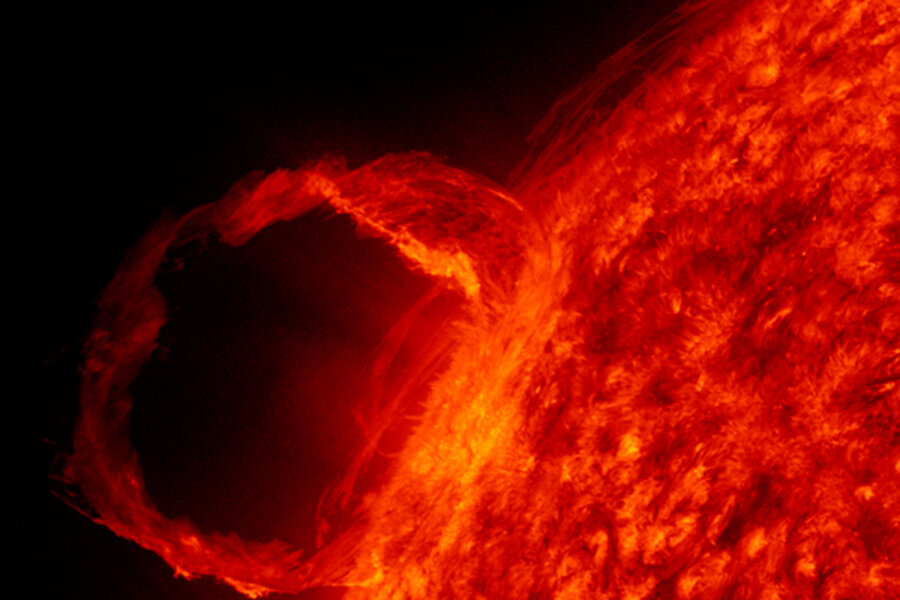How to look at the sun without blinding yourself
Loading...
As its cycle of activity finally begins to build, you’ll find more to see on (and around ) our sun. Perhaps the most beautiful of all solar phenomena is the prominence… a massive outburst of material from the sun’s limb that extends hundreds of thousands of kilometers into space. With the right optical tools, you can see these amazing events from your backyard. They look like slow-moving flickering flames on the edge of the sun.
And here’s the best part: when you observe the sun, you can “stargaze”– in the daytime– without losing a minute of sleep.
First, a warning: to see solar prominences and filaments, you need a telescope equipped with a “hydrogen alpha” filter. We covered these in a previous article. These solar filters let through only a slender band of red-orange light emitted by hot hydrogen gas in the sun’s outer layers. But that’s where most of the action is.
If you just only a white-light solar filter, you won’t see prominences because the brilliance of the sun’s photosphere washes out their delicate light.
And if you have NO solar filter for your telescope, please don’t aim it at the sun!! You’ll go blind instantly. Please read about how to equip yourself with a safe solar filter here and here.
With a telescope and H-alpha filter, a prominence looks like a curved flame emerging from the edge of the sun. Prominences are linked to magnetic activity, and consist of ejected material thrown off the sun and held in place by strong magnetic fields. Like sunspots, prominences come together over several days and remain suspended over the sun for days or weeks. But they don’t last forever: as the magnetic field moves around, a prominence becomes unstable and falls back into the sun.
And remember… the arcs of glowing hot hydrogen gas in a prominence are many times the size of our Earth.
You only see prominences along the sun’s limb. But the same effect occurs all over the sun’s surface. If you see a prominence along the line of sight between you and the sun’s visible surface, a prominence is called a filament. It looks like a dark curved line on the sun’s disk. But whether prominence or filament, it’s the same physical process going on.
Brian Ventrudo blogs at One-Minute Astronomer.





